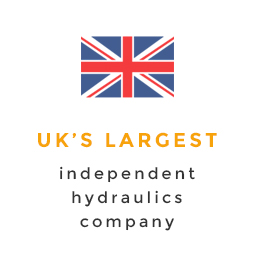Hydraulic Power: Where it all Began
Hydraulic power, or power using pressurised fluid, has shaped the way we live today and is a vital component in many engineering and mechanical applications.
Water has been used for hundreds of years as a source of power, and even dating back to the Roman times, it was used to power mills to create flour, timber and saw stone.
A process known as hushing was practiced in Britain, where water was used to remove lead from tin ore. Hushing was further developed over time into hydraulic mining, which was a dominant feature of the California Gold Rush.
A notable advancement in the invention of hydraulic power took place in 1648, when Frenchman, Blaise Pascal, discovered that fluid pressure remained uniformly constant throughout a closed system. This went on to become known as Pascal's Law.
Pascal's Law was further developed to understand how fluids could be used to produce energy, resulting in Daniel Bernoulli establishing Bernoulli's Principle in 1738. This detailed how a fluid would behave under different conditions of height and flow. Bernoulli's Principle became instrumental in the development of high-pressurised water pipes to produce power over large distances, although the advent of electricity made this a far more convenient way to generate power.
Another important milestone in the development of hydraulic power came about in 1795, when Yorkshire inventor Joseph Bramah took the principle of Pascal's Law to create and patent the hydraulic press. The press consisted of two cylinders and pistons - Bramah discovered that if a fluid force was exerted on the smaller piston, this created a bigger force on the larger piston.
This paved the way for the creation of electricity using hydraulic power plants, and once the industrial revolution got underway, hydraulic power was put to good use on a much wider scale.
Joseph Bramah was considered the grandfather of hydraulic power, but another key player in the developmental process of this form of energy was William George. In the late 19th century, William George designed a rotary engine that was capable of being powered by water. Although his initial idea didn't take off, with further refinements he developed a piston engine, which caught the attention of engineers and went on to be instrumental in the creation of hydraulic power-pipe networks. These were used to power cranes.
Hydraulic power is still a vital form of energy used today, particularly for generating electricity, but also for mechanical and engineering equipment such as car breaks, mechanical seals, pumps, accumulators and control valves. Take a look on any building site and most of the heavy equipment vehicles used will rely on hydraulic power in some form or another to operate. You'll also find hydraulic components in chair lifts, elevators, dishwashers and amusement park rides. As a significant invention of the last few hundred years, it seems inevitable that hydraulic power is likely to evolve and continue to serve many functions in years to come.
If you require high quality hydraulic components for a range of engineering solutions, Phoenix Hydraulics offers an extensive variety of options including pumps, valves, cylinders, motors, filtration systems and reservoirs, for a wide range of industry sectors. Phoenix Hydraulics also provides hydraulic engineering services from experts who can help get your hydraulic systems functioning effectively, serving your design, manufacture and installation requirements.


